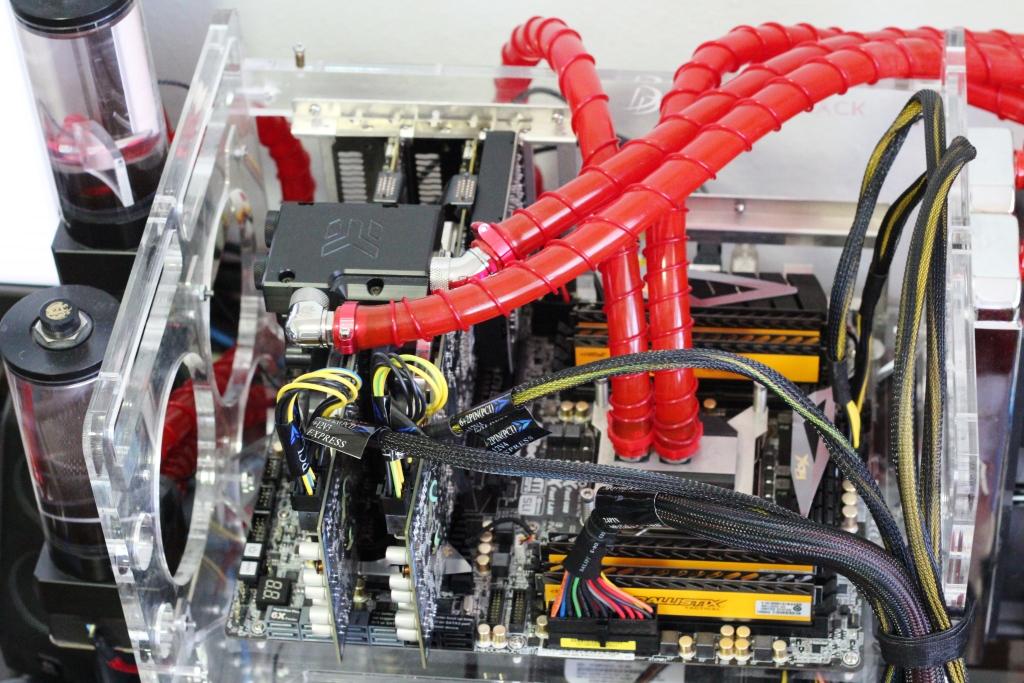TESTING METHODOLOGY
 Our complete testing methodology is described in our Solid State Storage Enterprise Test Protocol. We utilize the X79 Patsburg chipset in tandem with a LSI 9211-8i RAID controller card under the Windows Server 2008 R2 operating system.
Our complete testing methodology is described in our Solid State Storage Enterprise Test Protocol. We utilize the X79 Patsburg chipset in tandem with a LSI 9211-8i RAID controller card under the Windows Server 2008 R2 operating system.
The LSI 9211 allows us a stable platform that is relatively free from wild driver changes that motherboard chipsets are subjected to.
Utilizing software such as Iometer allows us the flexibility of testing these drives with direct attachment to the HBA, and a minimum of host processing limitations. This will eliminate all possible slow points and latency constraints that will be introduced into the testing by using network-based systems. We are focused on providing accurate measurements of the SSS itself, with no interference from performance-bound limitations introduced from other types of software and hardware that can be used. Different software-based approaches can be performance inhibited by many different aspects of the host systems CPU, RAM, and chipset limitations.
SNIA STANDARDS
We utilize several key considerations of the industry-accepted SNIA Specification for our testing. The performance of enterprise SSDs has to be conducted at steady state levels. This can be accomplished only by placing the drive under a very heavy workload over an extended period of time. Simply writing the capacity of the SSD several times will not suffice, as there are many factors that must be taken into consideration when attaining true ‘Steady State’.
‘Steady State’ can vary based upon the workload and the type of data access that is being placed upon the SSD. There is a profound difference between sequential and random data loadings, and also between various read/write mixed percentage workloads. The first requirement is to assure that 3 steps are taken to assure Steady State under very specific circumstances; Workload Independent Preconditioning (WIP), Workload Based Preconditioning (WBP), and steady state convergence verification. All measurements will be taken after WIP and WBP.
After each round of Preconditioning has been accomplished, there must be a logging of performance data to assure that Steady State has been achieved for both. As our final round of testing, we will apply 20% over provisioning to the respective device to test performance. Over provisioning (OP) is the practice of leaving large amounts of unformatted spare area on the device to increase performance and endurance under very demanding workloads. The link above contains much more data on our testing procedures.
F.O.B. READ MEASUREMENTS
FOB (Fresh Out of Box) measurements are taken when the SSD is new and hasnt been subjected to any use. As the device is used more we will see some lower results with write activity. Read speeds largely remain unchanged, so we can use these numbers as a comparison for the overall performance of the SSD. Compressibility of data also has little effect on the read speeds as a whole, so we will be posting compression data only, as there is minute variability.
The 4k Read Latency is a very important measurement, as it shows the overall responsiveness of the SSD under varying Queue Depths (QD). At the QD of 1, the 4k random access time comes in at .186, which is a very good latency measurement. Clicking the graphs will bring them to full size.
 The 4K Random read measurements are one of the most-sought after measurements when making an analysis of drive performance. Indicative of the overall speed and agility of the SSD at random access, they are the litmus test for one of the key advantages that SSDs possess. We test with a five second ramp-time for all measurements that we provide for all benchmarks, for the purposes of eliminating “bursty” results.
The 4K Random read measurements are one of the most-sought after measurements when making an analysis of drive performance. Indicative of the overall speed and agility of the SSD at random access, they are the litmus test for one of the key advantages that SSDs possess. We test with a five second ramp-time for all measurements that we provide for all benchmarks, for the purposes of eliminating “bursty” results.
The XceedIOPS 2 comes in with an impressive 5,364 IOPS at a Queue Depth (QD) of 1, which in actual usage it will probably rarely see. This is an important measurement as it is one of the base measurements of the latency of the device. At the higher QD of 32, which this SSD will almost certainly reside at, we recorded a sustained output of 57,390 IOPS, which is simply outstanding.
 To round off our read performance measurements, by far the quickest and easiest of all of our testing, we turn to the 128K Sequential Read tests. This test shows the maximum read throughput at a realistic file size that the SSD would encounter in enterprise usage. At a QD of 64 the read speed tops out at 517 MB/s.
To round off our read performance measurements, by far the quickest and easiest of all of our testing, we turn to the 128K Sequential Read tests. This test shows the maximum read throughput at a realistic file size that the SSD would encounter in enterprise usage. At a QD of 64 the read speed tops out at 517 MB/s.
 The SSD Review The Worlds Dedicated SSD Education and Review Resource |
The SSD Review The Worlds Dedicated SSD Education and Review Resource | 
Awesome product!
The independent review on you-tube, shows Enterprise/Server level at 50,000 to 100,000 P/E not 10,000 like this review states?
This report dates back to 2012. SMART is no longer a company. The reviewer, Paul Alcorn, was and remains to be one of the best storage evaluators in the industry.